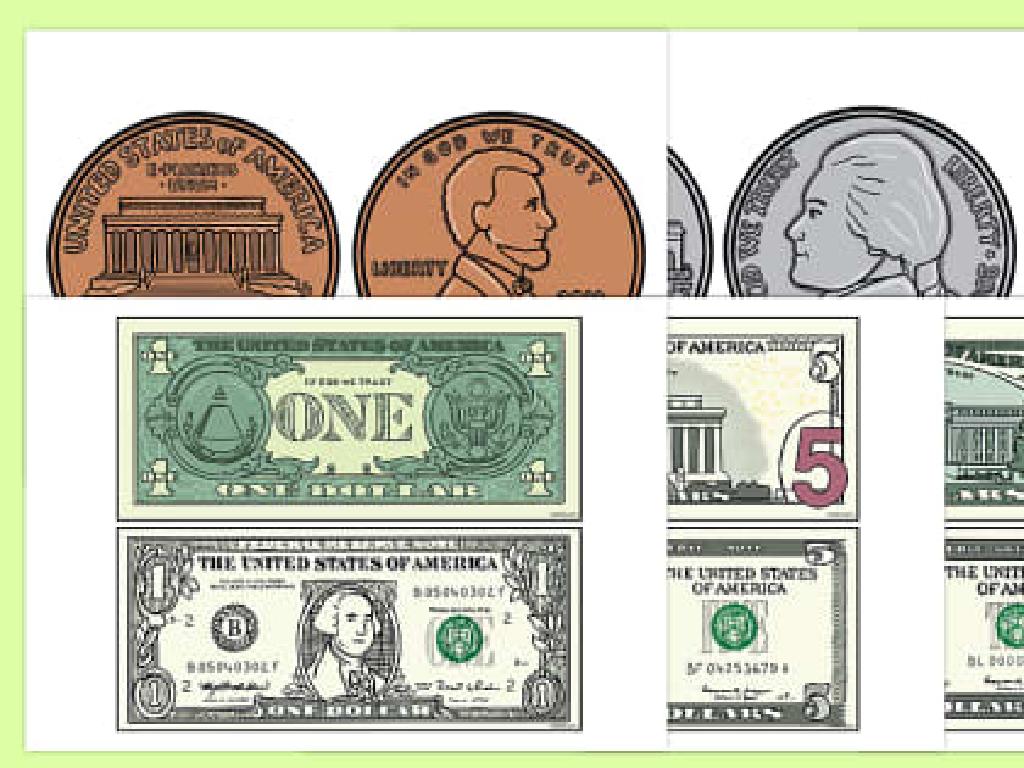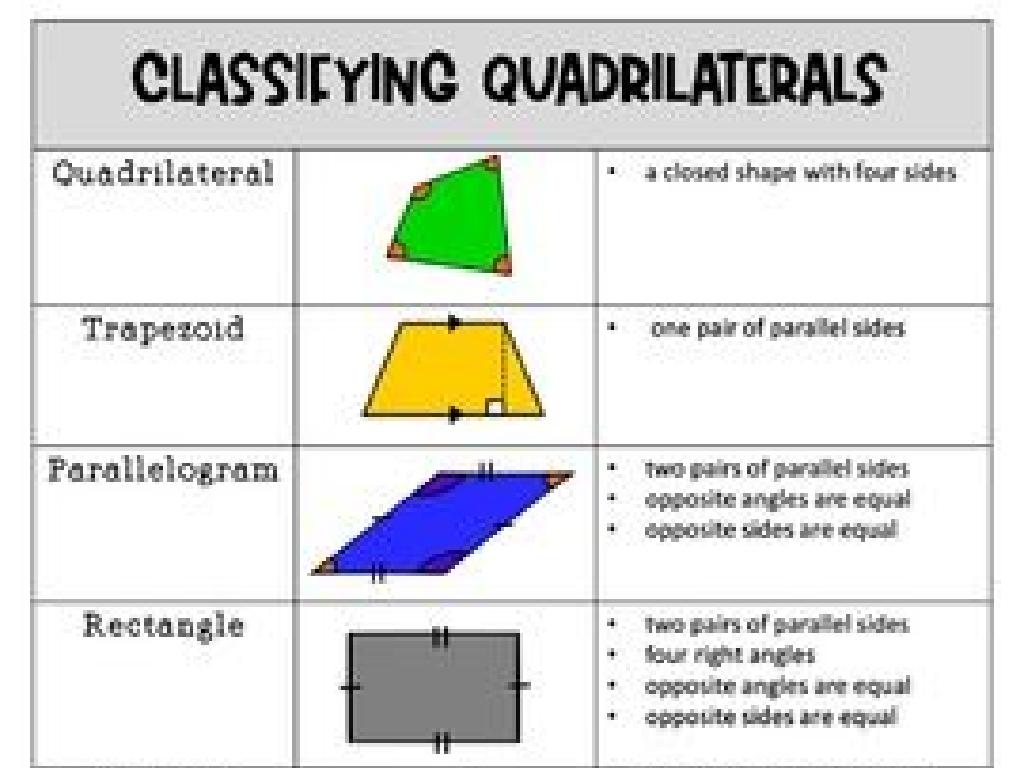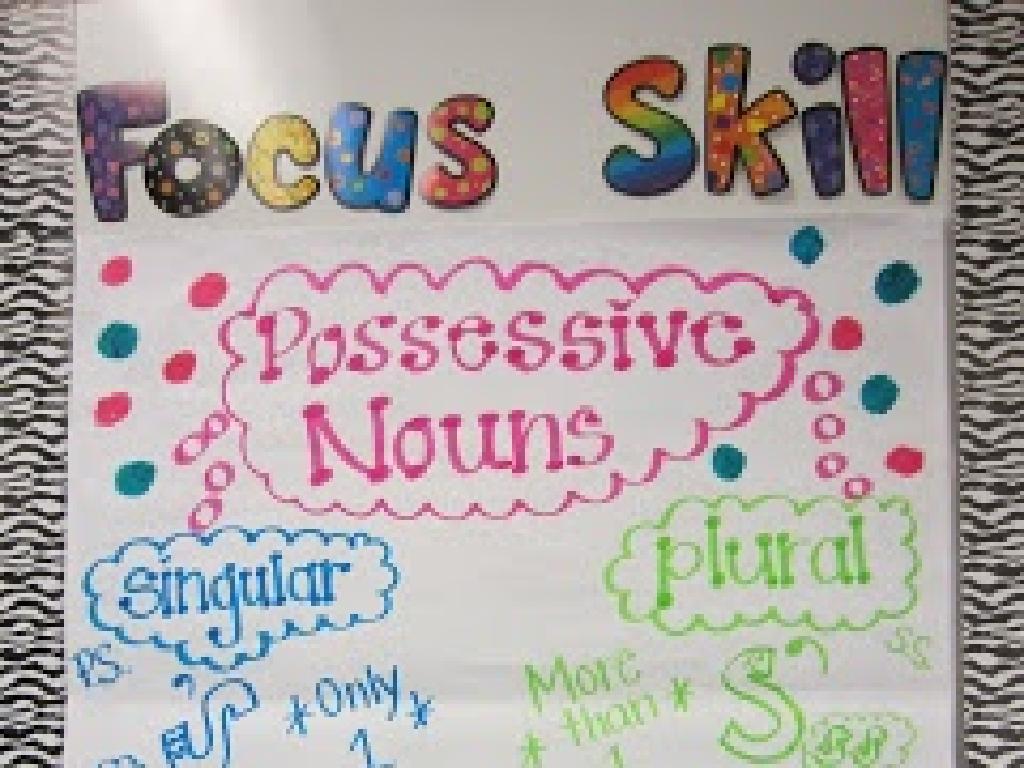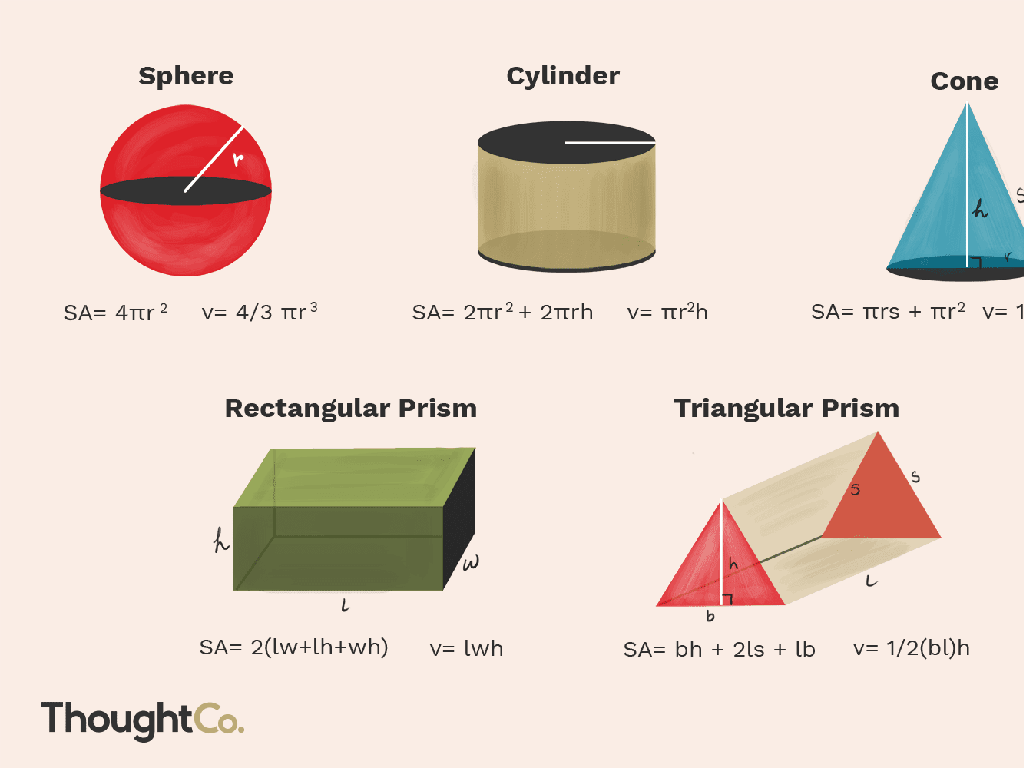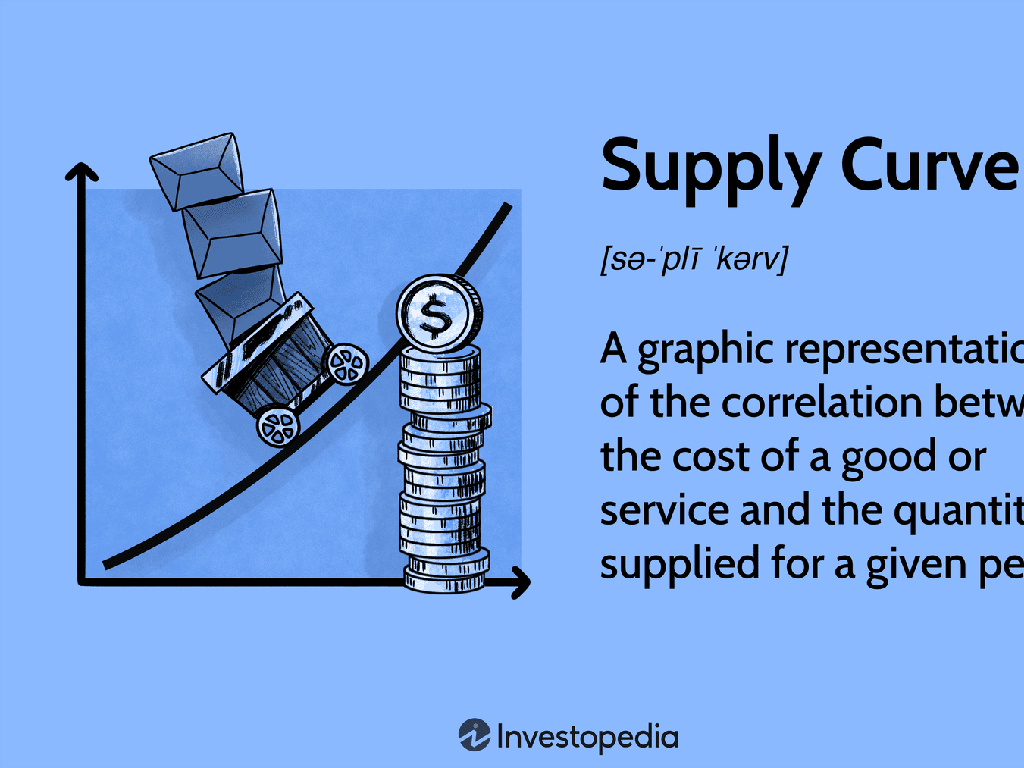Compare Ratios: Word Problems
Subject: Math
Grade: Seventh grade
Topic: Ratios, Rates, And Proportions
Please LOG IN to download the presentation. Access is available to registered users only.
View More Content
Welcome to Ratios!
– Understanding the concept of ratios
– A ratio shows the relative sizes of two or more values.
– The importance of ratios in real life
– Ratios are everywhere; they help compare and measure.
– Real-life examples: Recipes and Maps
– Recipes use ratios for ingredients, maps use them for scale.
– Solving ratio word problems
– Use ratio language to describe a relationship between two quantities.
|
This slide introduces students to the fundamental concept of ratios, emphasizing their practicality and prevalence in everyday life. Begin by explaining that a ratio is a way to compare two quantities, showing how much of one thing there is compared to another. Highlight the importance of ratios in various fields such as cooking, where ingredients are mixed in certain proportions, and in geography, where map scales represent the ratio of a distance on the map to the actual distance. Encourage students to think of ratios as a tool to solve problems efficiently, especially in word problems where they must apply their understanding to find solutions. Provide examples and practice problems to help students become comfortable with identifying and using ratios in different contexts.
Understanding Ratios
– Definition of a ratio
– A ratio shows how much of one thing there is compared to another
– Ratios express relationships
– It compares two quantities, showing the scale or size of one relative to the other
– Writing ratios in different forms
– Ratios can be written using words (3 to 2), as fractions (3/2), or with a colon (3:2)
– Examples of ratios in word problems
– If a recipe needs 3 cups of flour to 2 eggs, the ratio of flour to eggs is 3 to 2, 3/2, or 3:2
|
This slide introduces the concept of ratios, which are fundamental in understanding relationships between different quantities. A ratio is a way to compare two quantities, showing how many times one value contains another. It’s crucial to explain that ratios can be expressed in various forms, such as words, fractions, or with a colon, and each form has its use depending on the context. Provide examples to illustrate how ratios are used in real-life situations, such as in cooking or mixing colors for painting. Encourage students to practice writing ratios in different forms and to solve word problems that involve comparing quantities using ratios.
Comparing Ratios in Word Problems
– Understanding ratio comparison
– Comparing ratios means determining if they are equivalent or which one is greater.
– Using equivalent ratios
– Find equivalent ratios by scaling up or down, then compare.
– Real-world ratio examples
– Compare ratios in recipes or speed of different animals.
– Practice with ratio problems
|
This slide introduces the concept of comparing ratios, which is a fundamental skill in understanding relationships between quantities. Students should learn that comparing ratios involves analyzing if two ratios express the same relationship or determining which ratio represents a greater or lesser value. By finding equivalent ratios, students can scale them to have a common term for easy comparison. Real-world examples, such as comparing ingredients in different-sized batches of a recipe or the speed of animals, can make the concept more relatable. Encourage students to practice with word problems to apply what they’ve learned. Provide several examples and guide them through the process of finding and comparing equivalent ratios.
Solving Ratio Word Problems
– Comprehend the word problem
– Read carefully to understand what’s being asked
– Find the ratios involved
– Look for comparative quantities to form ratios
– Solve the problem systematically
– Use methods like cross-multiplication to find unknowns
– Check your solution
– Verify if the ratios make sense in the problem’s context
|
This slide is aimed at guiding students through the process of solving ratio word problems. Start by ensuring they understand the context and what the problem is asking. Teach them to identify the ratios by looking for words that indicate comparison, such as ‘for every’, ‘per’, or ‘out of’. Walk them through a step-by-step method to solve the problem, such as setting up proportions or using cross-multiplication. Emphasize the importance of checking their work by substituting their solution back into the original problem to see if it makes sense. Provide several practice problems and go through them together as a class.
Recipe Adjustments with Ratios
– Adjust recipes by scaling ratios
– Example: Cake recipe for more guests
– If original serves 4 and you need for 8, double the ratios.
– Calculate new ingredient ratios
– Multiply original ingredient amounts to find new quantities.
– Understand proportional relationships
|
This slide introduces the concept of using ratios to adjust recipes, a practical application of ratios in real life. Start by explaining how ratios represent relationships between quantities and how these can be scaled up or down. Use the cake recipe example to show how to double the ratios for a larger group. Teach students to multiply the original ingredient amounts to find the new quantities needed. Emphasize understanding proportional relationships, which is key to successfully applying ratios to various situations. In class, students can work on problems where they adjust recipes for different numbers of people, reinforcing their grasp of the concept.
Map Distances: Understanding Ratios
– Ratios represent map distances
– Real distances from map scales
– Map scales show the ratio of map distance to actual distance
– Example: Map scale problem
– If a map scale is 1 inch to 100 miles, how far is a 3-inch line on the map?
– Solving for actual distance
– Use the scale ratio to calculate the real-life distance
|
This slide introduces the concept of using ratios to interpret map distances. Begin by explaining that a map scale is a ratio that compares a distance on the map to the actual distance on the ground. Provide an example problem where students use the map scale to calculate the real distance between two points. For instance, if the map scale is 1 inch to 100 miles, and the distance on the map is 3 inches, the actual distance would be 300 miles. Encourage students to set up a proportion to solve these types of problems and practice with different scales and map distances. This will help them understand how ratios apply to real-world situations and enhance their problem-solving skills.
Ratio Comparison: Practice Problems
– Problem 1: Classroom ratios
– Compare the ratio of boys to girls in two different classes.
– Problem 2: Team player ratios
– Analyze the ratio of forwards to defenders on soccer and basketball teams.
|
This slide is designed to provide students with hands-on practice in comparing ratios through word problems. For Problem 1, present a scenario where students must compare the ratio of boys to girls in two different classes and determine which class has a higher ratio of boys or girls. For Problem 2, students will look at sports teams, comparing the ratio of players in different positions between two teams. Encourage students to set up the ratios and simplify them if possible to make the comparison easier. These problems will help solidify their understanding of ratios in real-world contexts. Provide guidance on how to approach each problem and facilitate a discussion on different methods to find and compare ratios.
Class Activity: Ratio Scavenger Hunt
– Find classroom ratio examples
– Work in pairs on ratio problems
– Compare different ratios found
– Present findings to the class
|
This interactive class activity is designed to help students apply their knowledge of ratios in a fun and engaging way. Students will work in pairs to search for items in the classroom that can be compared using ratios. They might compare the number of windows to doors, or the number of books to bookshelves, for example. After finding and solving these real-life ratio problems, each pair will present their findings to the class, explaining how they found their ratios and what they mean. This will not only reinforce their understanding of ratios but also develop their collaborative and presentation skills. Possible activities for different pairs could include comparing the number of pencils to pens, the number of tiles to ceiling lights, or the number of chairs to tables, ensuring a variety of ratio types are explored.
Wrapping Up: Ratios in Word Problems
– Recap of ratio comparison
– Significance of ratio skills
– Grasping ratios is crucial for problem-solving in various real-life scenarios.
– Homework: Ratio worksheet
– Solve the provided problems to practice comparing ratios.
– Be prepared to discuss solutions
– We’ll review the answers together in our next class.
|
Today’s lesson focused on understanding and comparing ratios through word problems, which is an essential skill in mathematics and applicable in many real-world situations. Emphasize the importance of mastering this concept for future topics in math and everyday decision-making. For homework, students are assigned a worksheet that includes various ratio word problems to reinforce today’s lesson. Encourage them to attempt all problems and remind them that we will go over the solutions in the next class, fostering a collaborative learning environment. Provide guidance on how to approach each problem and remind them to show their work for full credit.

